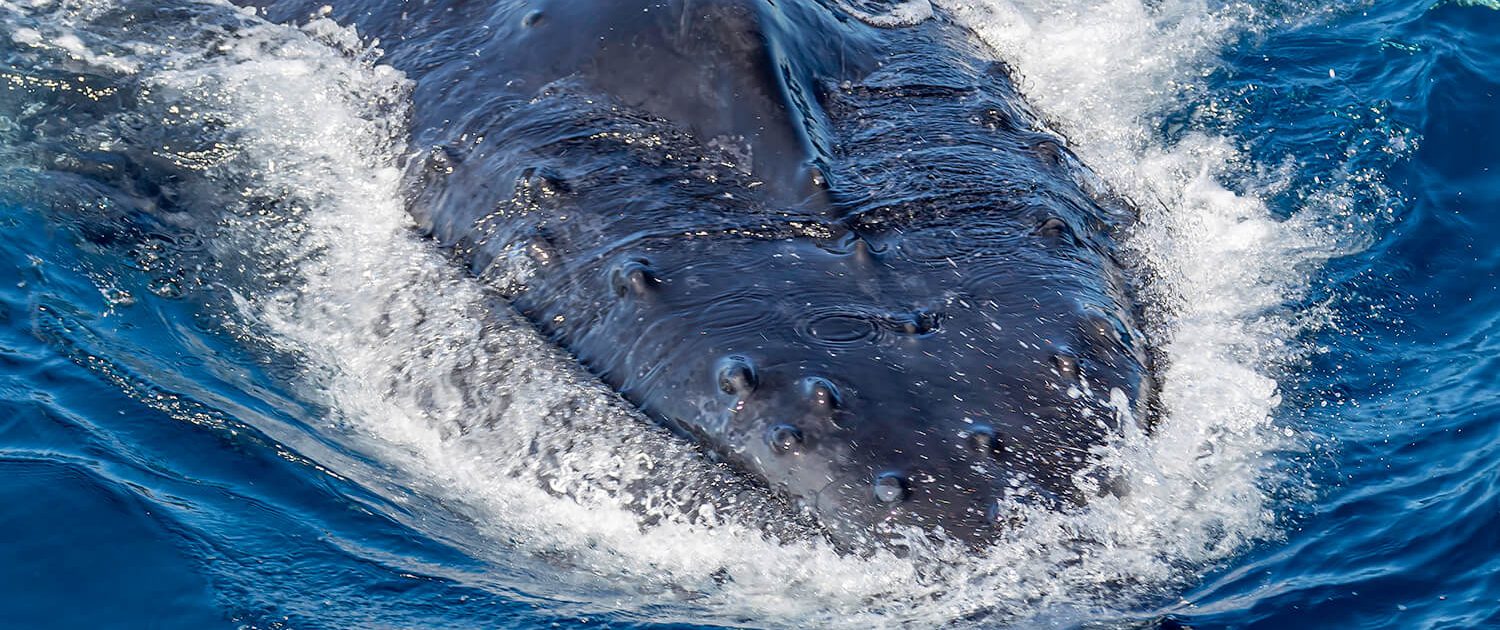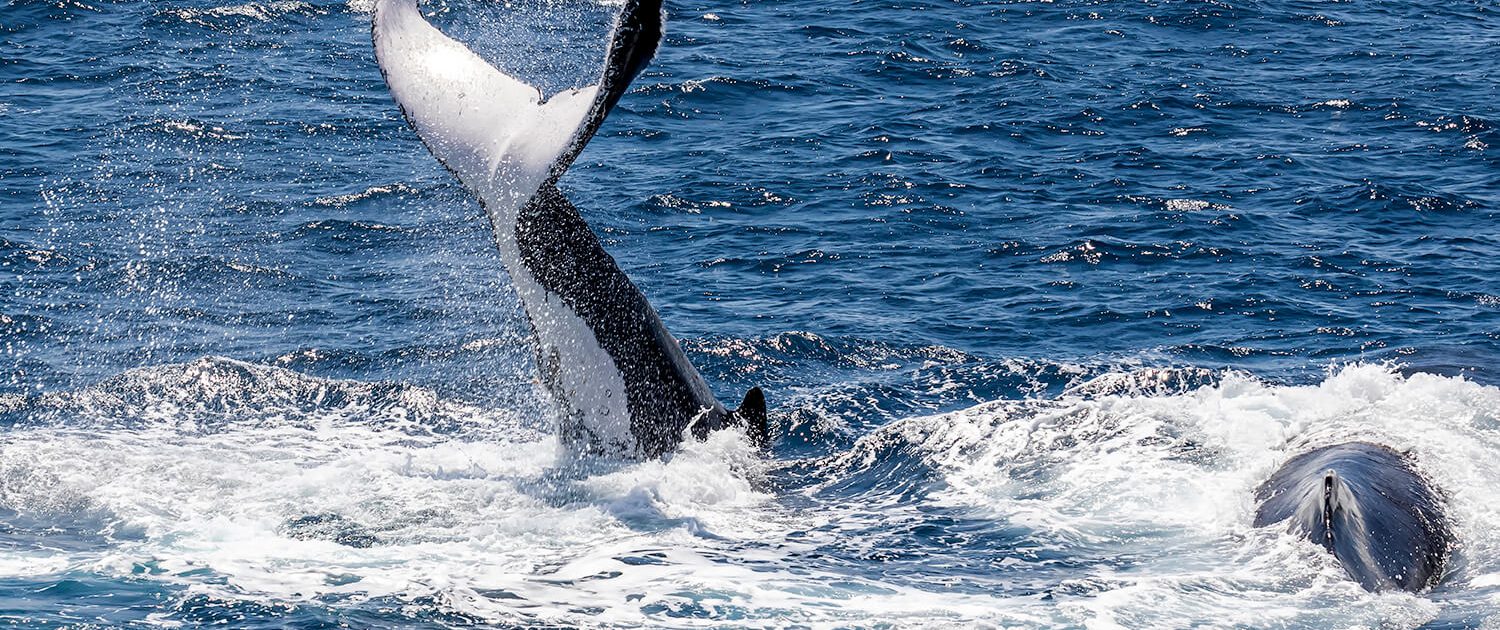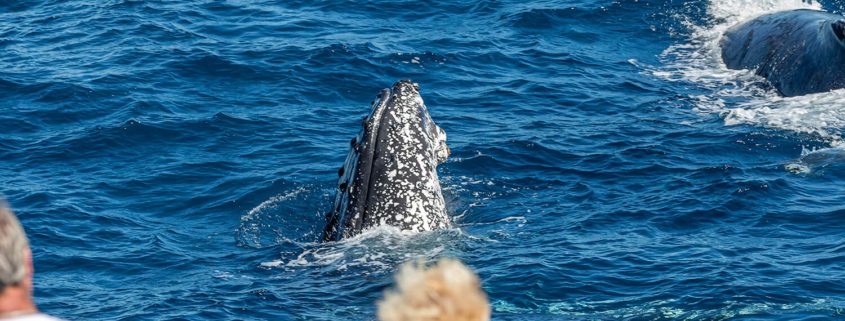Whale Watching Bundaberg
Both dolphins and whales are an iconic presence in the Great Barrier Reef, and are sacred for the Aboriginal people of the Keppel Islands and the Woppaburra people. They believe that the humpback whales are a saltwater totem that connects them to their ancestral land, their ancestors, and the sea to the land. There are around thirty species of whales in the Great Barrier Reef, and every year, some of these make their way to the pristine waters of Bundaberg, mainly from July to November.
This is the result of a migration from the waters of Antarctica to the Australian coast, so tourists can enjoy this majestic sight as the whales play and feed in the waters. The most common whales to make it to the Australian waters are the Humpback Whales. These marine giants are protected in the waters of the Great Barrier Reef, therefore, they find it to be an easy and safe place to breed and hunt in the waters.

The Humpback Whales
Each year, humpback whales make a ten thousand kilometer journey to the subtropical waters so they can mate and reproduce. The journey is usually led by males, but calves and females join to make the herd bigger the closer they get to Australia.
The safe and warm waters are ideal for their young offspring as baby humpback whales have little body fat and require time to endure cooler temperatures. Here, they bond with and learn essential survival skills before venturing out into the open waters. Because of their protected status, all whales roam freely in the waters without human intervention save for guided and controlled tours that keep their distance from the animals but allow tourists to enjoy viewing them.

Bundaberg Whale Watching Tours
Multiple touring opportunities are available that offer whale watching in Bundaberg, without disturbing the reefs or the animals. As Bundaberg is the gateway to the South Barrier Reef, they can combine whale watching and a night’s stay at the scenic Lady Musgrave or Lady Elliot Islands. Most of the tours also include a light lunch and an air-conditioned boat to keep guests comfortable during the tours.
With a watching deck and informed commentary about the animals, these tours combine this fantastic opportunity with a chance to learn more about whales and the dolphins that sometimes like to join in the feeding and games.
Conclusion
The concern about the whales and other marine animals such as sea turtles has ensured that the whale watching and dining tours are safe and eco-friendly. Since these areas and conservation grounds, they offer refuge to a multitude of animals, not just whales.
The tourists are often given the chance to see all sorts of fish, whales, dolphins, and seals if the tourists are lucky enough. Research is constantly taking place to ensure that the waters remain clean and safe for these animals, so whatever tourism is offered to the Bundaberg coastline and the Southern Great Barrier Reef, is controlled and limited.




Leave a Reply
Want to join the discussion?Feel free to contribute!